The Helsinki region has been inhabited for millennia, as proven by the Bronze Age burial mound in Kulosaari. Yet Gustav Vasa founded Helsinki as a city in 1550. Russia conquered Finland in 1808 and made Helsinki the capital of the Grand Duchy of Finland, a region within the country. Finland finally gained independence in 1917.
Helsinki already has a somewhat dark foundation, with parts of the city built on old cemeteries. As an example, Senate Square stands on land originally occupied by Ulrika Eleonora Church and its churchyard. The park beside Old Church on Bulevardi was originally a burial ground for plague victims in 1710 (Bird 2021).
With such a lengthy history, it’s bound to have a few ghost stories and folklore, surely? One of the things I found odd while researching this article was the number of short snippets about haunted legends, but less information to give the ghost a sense of purpose or context. So I’ve chosen examples where we’ve got a little more to go on.
I visited Helsinki in July 2023 and absolutely loved the city. So let’s go explore some ghost stories and legends of Helsinki.
The Headless Colonel
A headless colonel haunts the building on the corner of Vironkatu and Meritullinkatu in the Kruununhaka district. Known as Aleksi, he apparently uses the lift while carrying his head, either in his hands or under his arm. People hear him talking in apparently empty rooms, and he announces his presence with an oppressive atmosphere and heavy footsteps.
According to legend, he was a Russian marine officer who lived in the building in the early 1900s. He hanged himself after discovering his wife with another man when he returned from a trip (Inessa 2014). Some say he did this in the building’s attic.
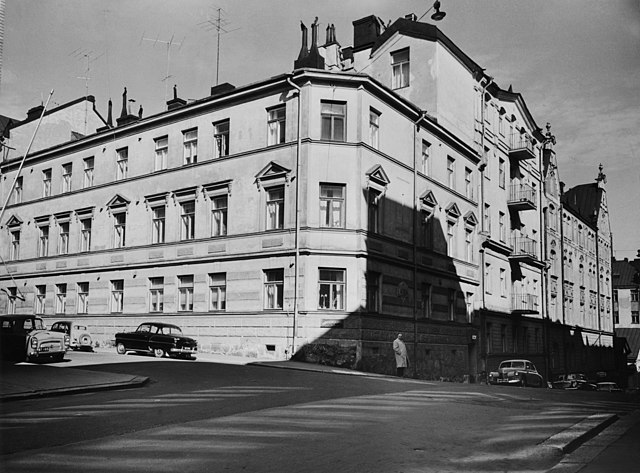
Later, Aleksi’s ghost took umbrage with a female resident who hated coming home alone late at night. Aleksi knocked on the walls and windows all night, eventually driving her away (Inessa 2014).
The building later became part of the University of Helsinki. A woman staying overnight saw a tall man in officer’s clothing walk through the bathroom door. Apparently, he vanished when she panicked.
University researchers work in the building and Aleksi likes nosing through their papers (Huttenen, n.d.). Workers come back to find their papers in disarray. Some have seen him with his head on his shoulders, and apparently he wears a peaked cap.
Haunted Theatres
Many cities feature stories of haunted theatres. London has, among others, its Man in Grey at Drury Lane. Newcastle has Grey Ladies and stagehands who died in accidents.
Not to be outdone, Helsinki boasts three haunted theatres.
The Alexander Theatre
Built in 1879, the Alexander Theatre was commissioned by Nikolai Alderberg the Governor General of Finland. The intended audience was the Russian garrison. Both the National Theatre and the National Opera moved here in 1918, which explains its old nickname of the Old Opera House.
Yet its ghost isn’t local. People believe the ghost came from the building that provided the bricks for the theatre. That was the Bomarsund Fortress in the Åland Islands, bombed in the Crimean War. The builders reused its bricks in the Alexander Theatre, and people think the ghost came with them. Some sources claim the ghost, apparently a soldier, enjoyed opera.
Staff know he’s around because he opens doors on his own (Huttenen, n.d.). Other stories include a director feeling a hand on his back during a rehearsal but finding no one there when he turned around. Children practicing ballet saw army boots hanging in mid-air. An actor noticed an electrician in the balcony who seemed to move in an odd fashion. When the actor looked more closely, he realised the figure was not only floating: he was also blue.
Perhaps most grandiose of all happened during a play based on the story of Aladdin. When the director and producer chatted after a performance, they complimented the actor playing the genie. When one of them said ‘genie in the lamp’, a chandelier lamp crashed to the floor beside them. One theory is that ‘genie’ and ‘spirit’ are the same word in Finnish, and the ghost got confused or upset (Katasonova 2016).
I just hope he doesn’t mind that the opera company moved out in 1993 (Strike the Truth 2021).
The National Theatre
Built in 1902, the Finnish National Theatre boasts at least six ghosts.
A Grey Lady wanders the theatre looking for her script. While she wears a grey robe and is presumably difficult to identify, some name her as Ida Ahlberg, while other sources say her identity is unknown. She’s also described as a White Lady, depending on the article (Katasonova 2016).
People spot Bertta Lindberg on the main stage and or in the women’s changing room. Actors and stagehands run into Kaarlo Bergholm backstage while they encounter Jalmar Rinne on the small stage. Actor Aarne Leppänen is also believed to haunt the theatre. He appeared at the theatre between 1916 and 1937, until he retired due to ill health. He died in July 1937, so his appearances at the theatre make sense.
People have seen Urho Somersalmi sitting in the director’s stall but he annoyingly vanishes when he’s spotted (Huttenen, n.d.). He is perhaps the most notorious of the ghosts. In 1962, Somersalmi killed his wife of 50 years with an ax. Ironically, the Finnish Actors’ Union gave him the ax as a gift. He then took his own life, and according to legend, still wanders the theatre holding the ax.
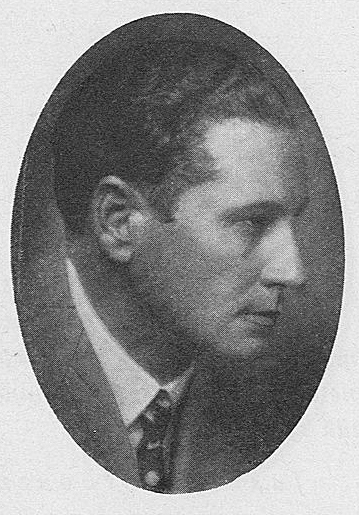
The Svenska Theatre
We often hear of White Ladies and Grey Ladies – and even the occasional Green Ladies. Yet the Svenska Theatre boasts four female ghosts wearing white, grey, turquoise, and black. There are also three male ghosts wearing white, grey, and black. Apparently, the man in black gets angry if the theatre host a production of ‘Axel’.
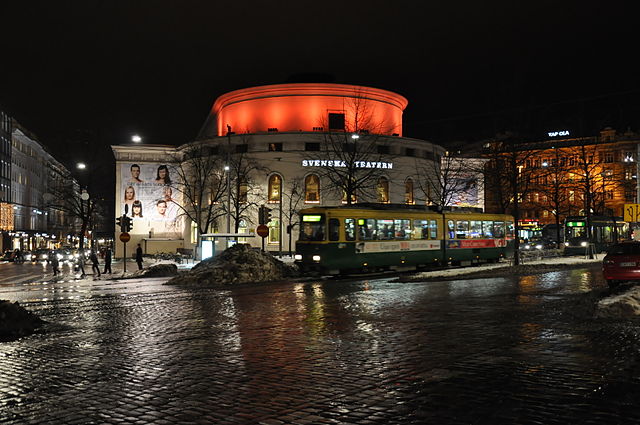
None of the articles I looked at seem to know who the ghosts actually are. They’re simply identified by the colours they wear. It does rather sound like they’re reprising parts at the theatre.
The Burgher’s House
In the 1800s, the Kruununhaka district was made up of wooden houses. Now, the only one left is the Burgher’s House, which is actually the oldest wooden house in Helsinki. It’s named for Burgher Alexandre Wickholm, who bought it in 1859. He oversaw Helsinki’s fire brigade.

One of his favourite pastimes was sitting on a rock in his garden. Given he was so fond of it, his family placed it at his grave after he died.
It seems Wickholm didn’t agree with the movement of the rock, and the family noticed weird disturbances at the house. Eventually, someone moved the rock back to its spot in the garden. Unsurprisingly, the disturbances stopped.
Some say you sometimes still see him sat on the stone after dark (Jones 2019).
Hietaniemi Cemetery
Established in 1829, Hietaniemi Cemetery is well worth a visit. It’s huge, but it’s also absolutely beautiful – I even saw red squirrels playing among the trees.
While here in the UK, people either leave cut flowers or fake posies, in Helsinki people plant small, living plants that continue to grow on the grave. They continue to maintain the plants, so the graves feel very well-tended.
Traditionally, Finns visit their loved ones’ graves on 1 November. They buy havu, or bundles of branches, to lay on the graves (Hey Helsinki 2014). They also light candles on graves.
As you might expect, there are rumours of ghosts wandering the cemetery in the middle of the night. Some even claim they’ve heard whispering at night. One legend claims that the dead leave their graves on the dark moon and steal souls from anyone who got too close, though I would imagine there would be much more specific stories had that actually happened.
The Pohjola Insurance Building
Head to Aleksanterinkatu to find the Pohjola Insurance Building. While the building itself is not haunted (as far as I can tell), its exterior is worth including in an article about folklore.
Architect Eliel Saarinen designed the building in 1901 and the doors, windowsills and molding all feature carved stone creatures. Even the name ‘Pohjola’ refers to a mythical region to the north featured in the Finnish epic poem, the Kalevala.
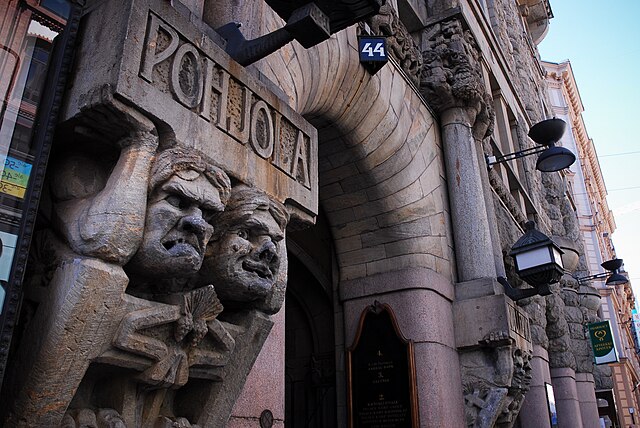
Elias Lönnrot compiled and edited the first edition of the Kalevala in 1835 after collecting folk poems around Finland and Karelia. These poems were part of a song tradition that existed among speakers of Balto-Finnic languages for 2,000 years (Asplund 2017). Its publication helped to bring Finnish language and culture to new audiences, and a second edition of the Kalevala came along in 1849.
A powerful woman named Louhi ruled Pohjola, and some thought you could find the World Tree’s roots there. The decorations of trees, squirrels, and other creatures make sense on the Pohjola Insurance Building.
Which of these Helsinki ghost stories did you enjoy best?
Helsinki is a beautiful city that’s well worth a visit. When I was there, as well as visiting the cemetery, I also went to the Design Museum and the Observatory. The Design Museum has the silver necklace Princess Leia wears at the end of A New Hope if you like costume design! The Observator is great for all things astronomy and space – it’s small but still a nice way to spend an hour or so.
But despite how clean, friendly, and welcoming Helsinki is, remember these stories when it starts to get dark. Especially keep them in mind if you go to any of the theatres. Pay attention to that brief pat on your back, or the movement out of the corner of your eye. Perhaps you’ve just met a theatre legend…and didn’t even realise….
References
Asplund, Anneli and Mettomäki, Sirkka-Liisa (2017), ‘Kalevala: The Finnish National Epic’, This is Finland, https://finland.fi/arts-culture/kalevala-the-finnish-national-epic/.
Bird, Tim (2021), ‘Taking to the Streets for a Spirited Helsinki Ghost Walk’, This is Finland, https://finland.fi/life-society/taking-to-the-streets-for-a-spirited-helsinki-ghost-walk/.
Hey Helsinki (2014), ‘The Night of the Dead’, Hey Helsinki, https://heyhelsinkiblog.com/2014/11/02/a-night-in-the-dead-centre-of-town/.
Huttunen, Antti (no date), ‘Helsinki’s most chilling places and stories’, My Helsinki, https://www.myhelsinki.fi/en/see-and-do/sights/helsinkis-most-chilling-places-and-stories.
Inessa (2014), ‘Ghosts of Helsinki: Colonel Aleksi’, Next Stop Helsinki, https://nextstophelsinki.wordpress.com/2014/05/10/ghost-of-helsinki-colonel-aleksi/.
Jones, Maritta (2019), ‘Haunted Helsinki’, Discover Helsinki, https://discoverhelsinki.fi/arts-culture/special/haunted-helsinki/.
Katasonova, Anna (2016), ‘Ghosts live behind the stage — The horror tales of Helsinki theatres’, Explore Helsinki, https://explorehelsinki.wordpress.com/2016/10/30/ghosts-behind-the-stage/.
Strike the Truth (2021), ‘Hauntings in Finland: Ghosts of Helsinki’, Strike the Truth, https://www.strikethetruth.com/2021/08/hauntings-in-finland-ghosts-of-helsinki.html.
Nutty about folklore and want more?
Add your email below and get these posts in your inbox every week.
You'll also get my 5-step guide to protecting your home using folklore!




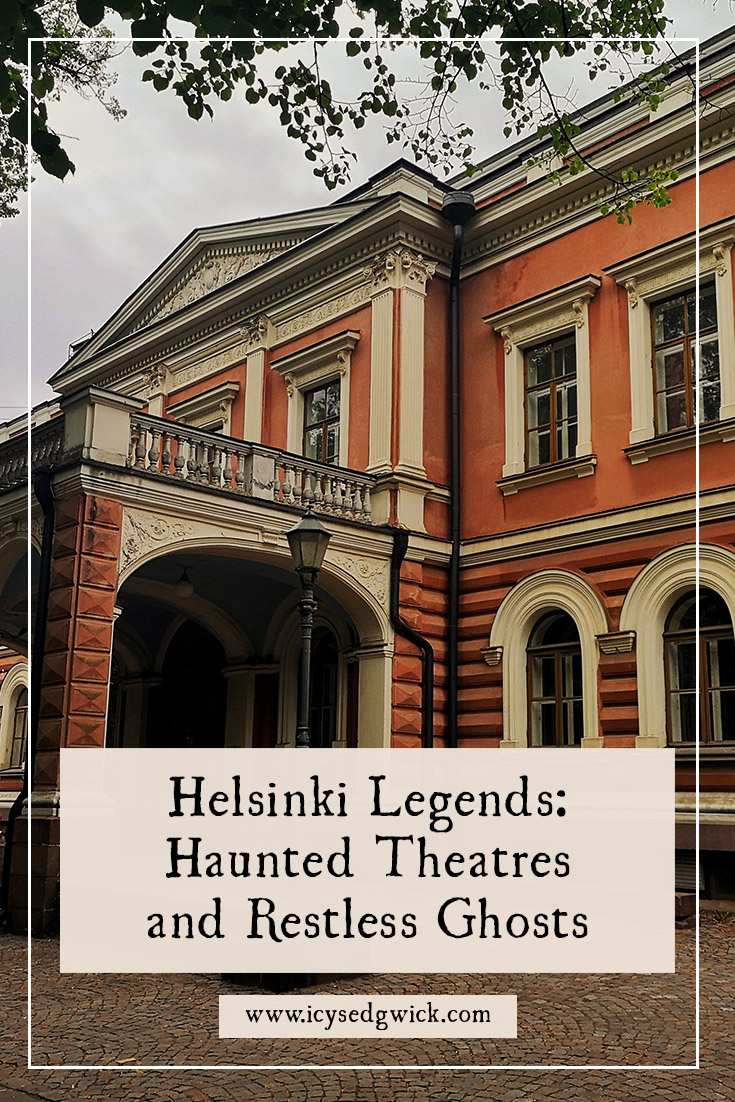





Have your say!